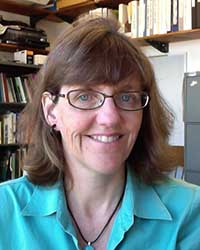Over 50 years, and with the support of the Linnaean Society and countless volunteers, Helen Hays built one of the most important tern colonies in the world. The next 50 years will change conditions for the terns dramatically. In this presentation, Dr. Rubega will describe current activities on behalf of the terns, and future challenges and opportunities at Great Gull, along with the results of a structured planning process to ensure the conservation of terns on Great Gull Island over the years ahead.

Margaret Rubega is a Professor and Curator of Ornithology in the Department of Ecology and Evolutionary Biology at the University of Connecticut, as well as the Connecticut State Ornithologist. She first set foot on Great Gull Island in 1979, and the experience made her a biologist. She did her graduate work at the University of California, Irvine, on the feeding mechanics and ecology of phalaropes in the context of the legal battle of water rights at Mono Lake, California, and postdoctoral work on shorebird resilience to salinization of wetlands at the University of Nevada, Reno. Work in her lab focuses on a diverse array of birds, across a variety of habitats; all her work is unified by an interest in answering the questions How Does That Work? and How Does it Matter? She approaches questions in avian conservation, ecology and evolution mechanistically, integrating tools from functional morphology, biomechanics, physiology, and animal behavior. She has conducted research on shorebirds, seabirds, hummingbirds, swifts, and a variety of passerines, in field sites in the Arctic, Antarctic, and North America. Her recent work on the conservation of terns at Great Gull Island brings her full circle. She has never eaten a Culver Williams sandwich.
This program was not recorded at the request of the speaker.

